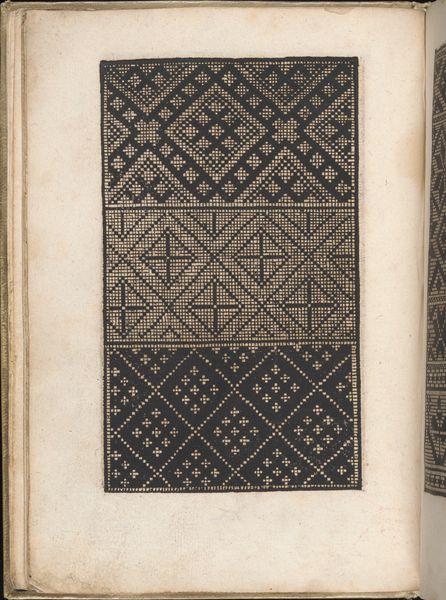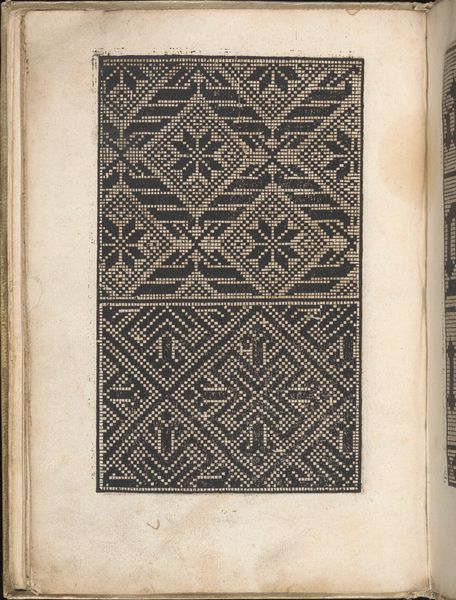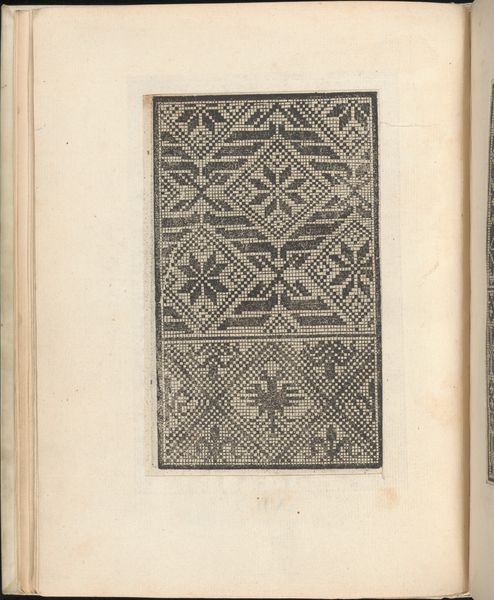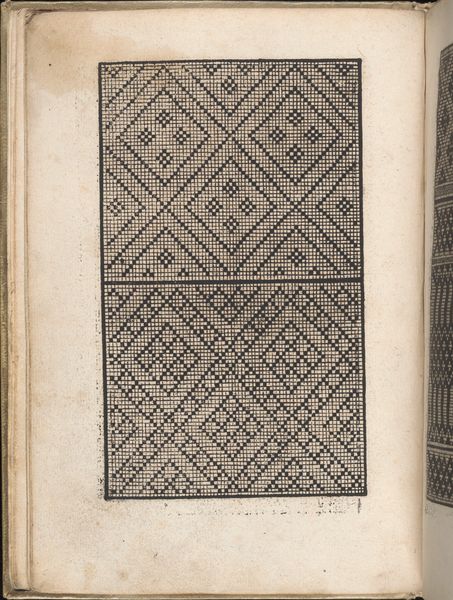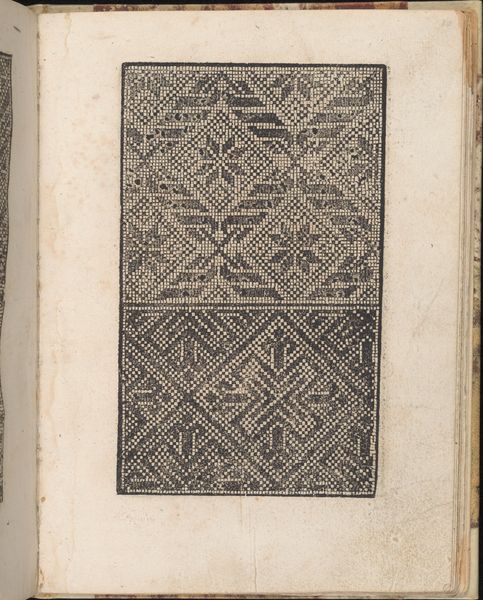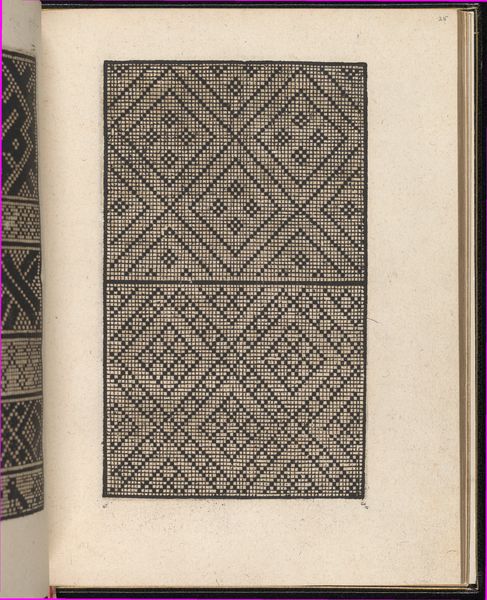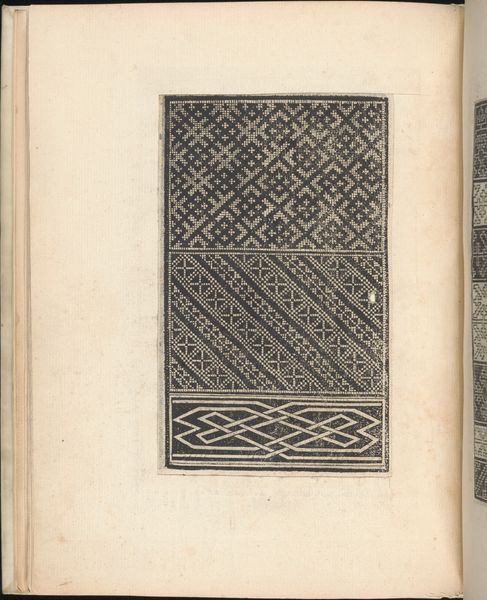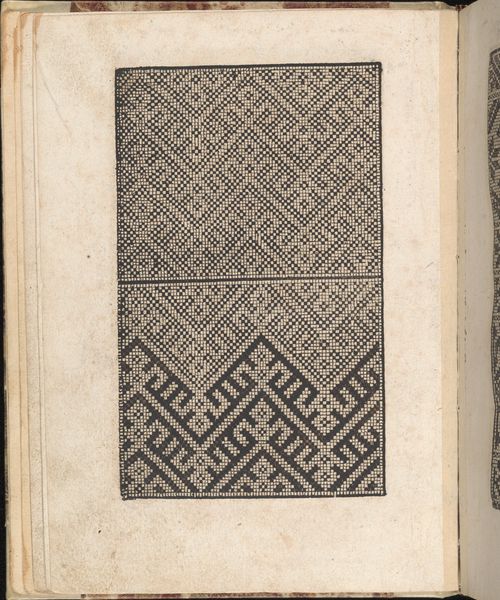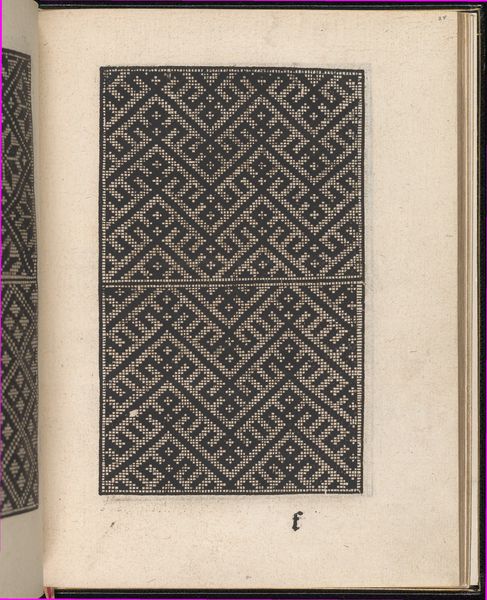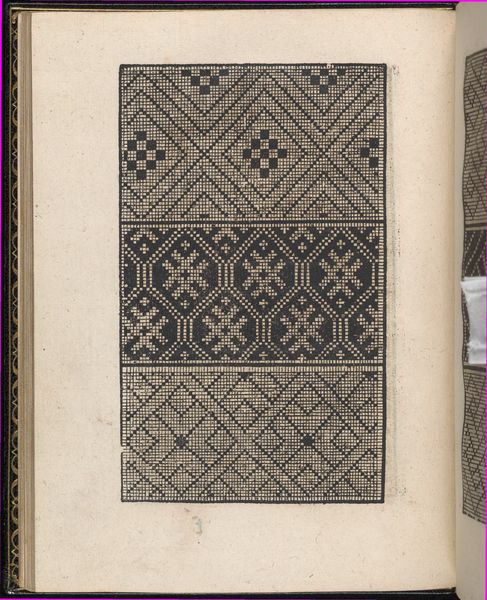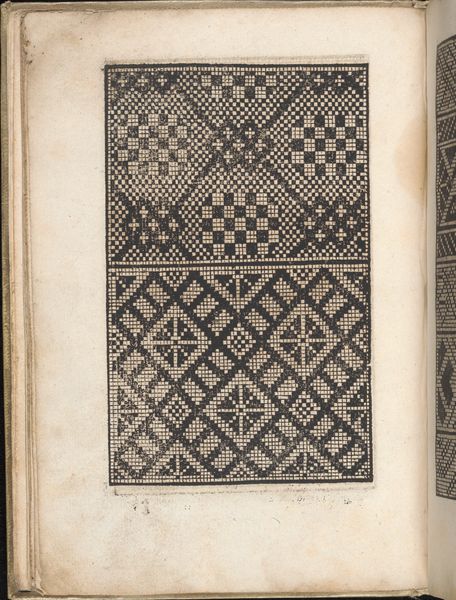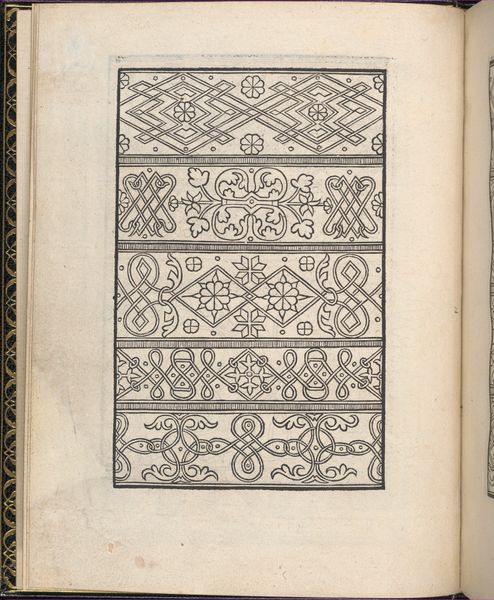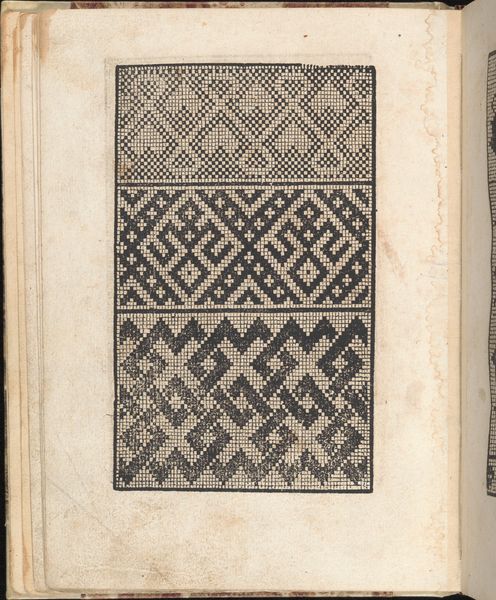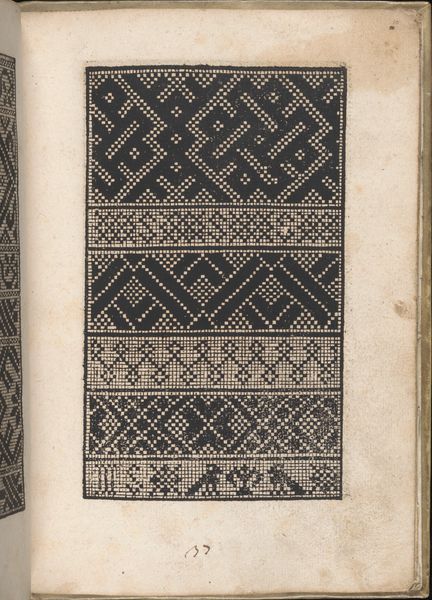
Page from Ein new kunstlich Modelbuch...(Page 30r) 1544
0:00
0:00
drawing, ornament, print, woodcut
#
drawing
#
ornament
# print
#
book
#
pattern
#
decorative
#
geometric pattern
#
11_renaissance
#
geometric
#
woodcut
#
repetition of pattern
#
pattern repetition
#
northern-renaissance
#
textile design
#
decorative-art
Dimensions: Overall: 7 11/16 x 5 7/8 in. (19.5 x 15 cm)
Copyright: Public Domain
Curator: Immediately, I'm struck by how industrious it looks, almost machine-made, yet clearly crafted by hand. Editor: Indeed. Here we have "Page from Ein new kunstlich Modelbuch...(Page 30r)," a print made in 1544 by Peter Quentel. This work is currently held at the Metropolitan Museum of Art. It's an example of a northern Renaissance pattern book, used as a reference for textile designs and embroidery. Curator: So, this book would have influenced craftspeople to construct very exact geometric forms? What impact might this standardization of ornamentation have had? Editor: Exactly. These Modelbuch, or pattern books, provided designs that could then be applied to various textiles and crafts. Quentel's designs, rendered through woodcut prints, likely impacted labor by speeding up the design process. Craftspeople could reproduce pre-made designs, changing the traditional dynamic between invention and craft production. Curator: I find it fascinating to think of how such systematization might play out when considering hierarchies. We are often taught that Renaissance patrons elevated certain artistic skill sets and voices above others; what could this pattern tell us about the contributions and techniques of the unnamed workers who depended on designs for commercial creation? Editor: It’s an important question, and it requires us to reconsider accepted narratives. The mass reproduction of pattern books undoubtedly amplified artistic expression while potentially further subjugating makers and the materials to industry and capital. Curator: I’m beginning to notice an odd tension in what would be perceived today as “craft,” a commercial art form, and these early strategies used for standardizing, as you mention, industrialization and commodification. It’s a very nuanced intersectionality we should consider. Editor: Absolutely. The material constraints and methods used shaped the aesthetics, the artistic movements, and even potentially social status. It is these details of process, and materiality that shape not only visual output, but a wider discourse, too. Curator: Thanks to your perspective, I see this unassuming print in an entirely new, more complex light. I realize the deeper impacts involved in a common Renaissance ornamental pattern that extends far beyond the book and beyond our present view. Editor: The labor of art and art making impacts class dynamics that extends throughout centuries; paying attention to material realities and production methods is just as important in revealing those contexts.
Comments
No comments
Be the first to comment and join the conversation on the ultimate creative platform.
